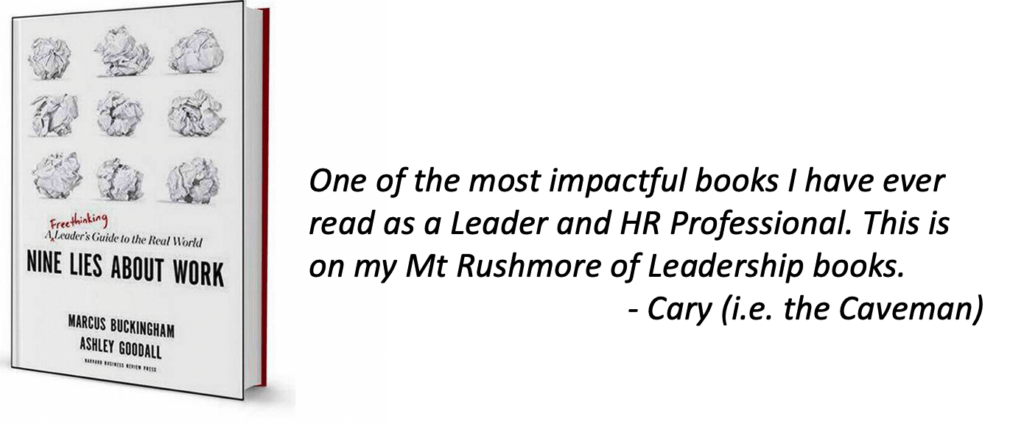Do you work to live, or do you live to work? For some people, this is a no-brainer. We all know some people that put in their 9-5, and then leave everything back at the office. And we also know some people that let their work consume them, until work is the only thing they think about. Personally, I have struggled with both sides of the spectrum. I am deeply committed to my family, friends, and hobbies outside of work, but at the same time, I am incredibly ambitious and want to be the best in my field.
Trying to find “balance” feels impossible for me, and most likely you are experiencing that difficulty as well. You might not have kids or a spouse, but I am 100% certain that there are things that you enjoy that are outside of work. All of us have a life that is outside of work, so it should be little surprise that the one of the most frequent topics in business magazines (HBR, Inc., Forbes, etc…), blogs, and thought is “how to have work-life balance”.
Even small to medium sized companies have started to really focus on “work-life balance”. This is evident in the amount of job advertisements and corporate websites that advocate how flexible their company is, and how they give time so you can balance your work and your life. You can be guaranteed, that if your company isn’t advertising how well your culture can balance work and life, top talent are skipping your open roles. And who could blame them. If they could choose, why wouldn’t they try and have it all… a great life and a great job.
The problem is that work-life balance is a very fluffy concept, and something that is unique to everyone. A company culture that might be perfectly balanced for me, might lead to burnout for someone else. Business leaders and their HR partners need to realize that work-life balance is not something that can be built into a culture. In fact, we need to stop trying to balance our work and life. Instead we need to be finding love at work.
Work-Life Balance

Part of the problem is how we think about work and life
Part of the problem in work-life balance stems from how we even think about work. By its definition, work is something that we all get paid for. Most of us aren’t working for free, and we would balk at the thought of paying for the privilege to work. Unlike how we pay the privilege to work out or perform our hobbies. Even work can be a huge distraction from work. When I have a big deadline to work towards, my first thought is to work on it from home, away from the countless interruptions at the office.
While work is filled with stressors and a drain, life on the other hand is seen as the light at the end of the tunnel. In the book 9 Lies about Work, Marcus Buckingham and Ashley Goodell explain this perception the best. They write “We lose ourselves in work, and rediscover ourselves in life. We survive work, but live life. When work empties us out, life fills us back up. When work depletes us, life restores us.”
But I find this vision of “life” very flawed. Sure your life can be very personally rewarding, but at the same time life outside of work can be filled with its own stressors. In fact, life stressors are significantly more stressful. In the Holmes & Rahe Stress scale, life events are ranked in terms of how much stress they impart on the average person. The first work related stressor, “Losing your job”, is ranked #8, and comes after life stressors: death of a spouse, divorce, marital separation, imprisonment, death of a family member, personal injury, and getting married.
Work-Life Balance

Finding love at work helps work-life balance
Thankfully most of us will not be experiencing these huge stressors on a yearly basis. That being said, we need to recognize that life is stressful too. Finding a better balance in your work-life might sound great, but not if your life is adding more stress then your work. So, instead of striving to balance the “bad” work and the “good” life, we should shift our focus on maximizing the good in both areas. We need to find the love at work.
Now before you start gagging on the cliche, that everyone should “love” what they do. Thats not what I mean. Loving what you do is something that some people experience, but many others do not. And for those of you who don’t “love” their job, that is fine. We are suggesting that we actively look for aspects of our jobs/work that we really do enjoy, and when possible maximize those aspects.
It might not seem like a lot, but even little changes to your job can have dramatic impact on your stress. For example, the Mayo Clinic wanted to understand the stress levels of their physicians. They found that 52% of physicians felt burned out, and 15% were experiencing PTSD (and this was before Covid). They went further and found these levels had quantifiable effects on patient satisfaction, and even substance abuse, depressing abuse amongst the physicians.
But the study was not all doom and gloom about the stress levels within medicine. They also one critical thing that separated the physicians who were burned out, and those that were doing alright. They asked everyone what percentage of their job they actually loved doing, and surprisingly the magic number was 20%. For each percentage point below 20%, there was a significant increase in the level of burnout. If the physician answered that they loved 20% or more of their job activities, then they was more engaged and within normal levels of stress.
Work-Life Balance

So what part of your job do you love?
I love the Mayo Clinic study on stress because it shows us an achievable path forward. We don’t have to “love” everything about work to feel less stressed or balanced. All we need to do is love 20% or more of our job tasks, and that is something that all of us can pass. While possible, it is unlikely that you are loving 0% of the activities of your job. Most likely, even if you are stressed and not really enjoying your job, you are probably around the 10% mark. In that sense you are already halfway there.
Unfortunately, the gap to the 20% threshold feels impossible for a lot of people. The ADP Research Institute’s global engagement study found that 84% of people do not think their job allows them to play to their strengths everyday. Think about that for a second. 4 out of 5 of your colleagues do not think their job utilizes where they are strongest. But the same study also found that over 72% of people believed that “I have the freedom to modify my role to fit my strengths better.” So even though most people could make their jobs more enjoyable by doing the things they are strongest in, most don’t.
But if you want to modify your role, and do things you love, the first step is to understand what aspects of your role you love and which you loath. We recommend conducting a week-long love-loath audit. Start by creating three columns: Loved It, OK, Loathed It. As you go through the week, think about each task you are doing, and put it into a column. And as you label each task or meeting, ask yourself why. Why do I loathe that meeting with Bob? Why did I love finishing that presentation?
Once you have identified your Love it / Loathe it list, I suggest talking with your manager, and be honest with them. “I love X, Y, and Z about my job. How can I do more of that? And is there any way I can do less of A and B?” That simple conversation will dramatically improve how you feel about work, and take you one step closer to maximizing your love in both work AND life.
Work-Life Balance

Everyone loves playing to their strengths
The simple truth is that people love doing things they do well. They love playing to their strengths. And that is something most leaders and companies can help address. Instead of fluffy talk about work-life balance, leaders and companies can have pragmatic discussions with their people about how they can better utilize their strengths and cross that 20% threshold. Trying to help people improve their work-life balance is a daunting task for many leaders, but helping someone modify their role to better tap into their strengths is a much more manageable goal. All you have to do is help them love 20% of their job… that’s not that much!
And if you are reading this thinking about your own work-life balance, do yourself a favor. Reframe it from a work-life balance into a Love-Loathe imbalance. Whether it is in your home or at your office, make it your goal to increase your number of Love It moments per week, and don’t stop till you blow past that 20% threshold.
Work-Life Balance

For More Inspiration Work-Life Balance read “Nine Lies About Work”
I came across this approach to work-life balance in the book “Nine Lies About Work: A Freethinking Leader’s Guide to the Real World” by Marcus Buckingham and Ashley Goodall. Nine Lies uses research, data, and engaging stories to identify and dismantle some of the most common beliefs we hold about work and replace them with simpler truths. I can personally attest that some of my core beliefs about leadership and high performance were completely shook up. For example, I am a huge believer in the importance of family. I have made a lot of career decisions with my family in mind, even walking away from some top roles. But after reading Nine Lies, I have started to question my approach. If you are a fan of this article, then I recommend you read Nine Lies.Cary Bailey–Findley has built High Performance Cultures within three Fortune 500 companies, and was awarded the ranking of #1 development organization in the world by the Association of Talent Development. He is currently the Talent Manager for SimCorp, but spends his free time helping startups scale up the the talent they need to succeed.




Add a Comment